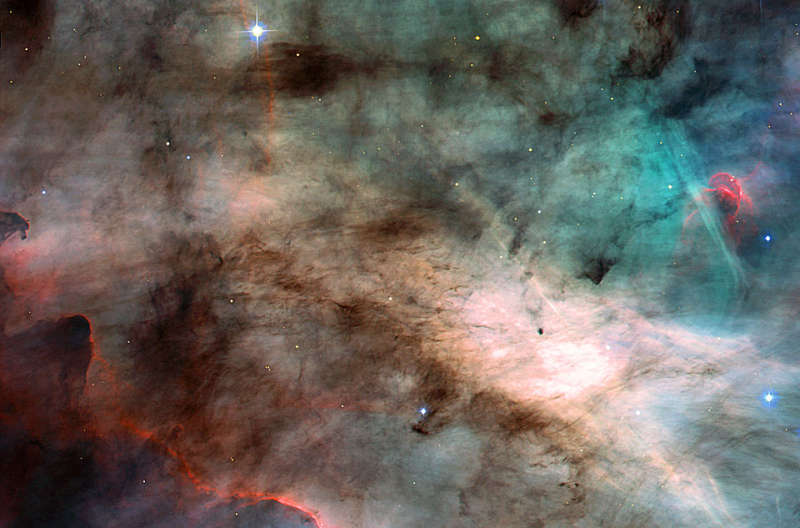Credit & Copyright: NASA, H. Ford (JHU), G. Illingworth (UCSC/LO),
M.Clampin (STScI), G. Hartig (STScI),
ACS Science Team, and
ESA
Explanation:
In the depths of the dark clouds
of dust and molecular gas
known as the Omega Nebula, stars continue to form.
The above image from the Hubble Space Telescope's Advanced Camera for Surveys shows exquisite detail in the
famous star-forming region.
The dark
dust filaments that lace
the center of Omega Nebula were created in the atmospheres of cool giant stars and in the debris from supernova explosions.
The red and blue hues arise from glowing gas heated by
the radiation of massive nearby stars.
The points of light are the young stars themselves, some
brighter than 100 Suns.
Dark globules mark even younger systems, clouds of gas and dust just now
condensing to form stars and planets.
The Omega Nebula lies about 5000 light years away toward the constellation of Sagittarius.
The region shown spans about 3000 times the diameter of our Solar System.
Dark Mysteries:
Astronomy Seminar of the Week
1999 2000 2001 2002 2003 2004 2005 2006 2007 2008 2009 2010 2011 2012 2013 2014 2015 2016 2017 2018 2019 2020 2021 2022 2023 2024 2025 |
Yanvar' Fevral' Mart Aprel' Mai Iyun' Iyul' Avgust Sentyabr' Oktyabr' Noyabr' Dekabr' |
NASA Web Site Statements, Warnings, and Disclaimers
NASA Official: Jay Norris. Specific rights apply.
A service of: LHEA at NASA / GSFC
& Michigan Tech. U.
|
Publikacii s klyuchevymi slovami:
Omega nebula - M 17 - tumannost'
Publikacii so slovami: Omega nebula - M 17 - tumannost' | |
Sm. takzhe:
Vse publikacii na tu zhe temu >> | |
